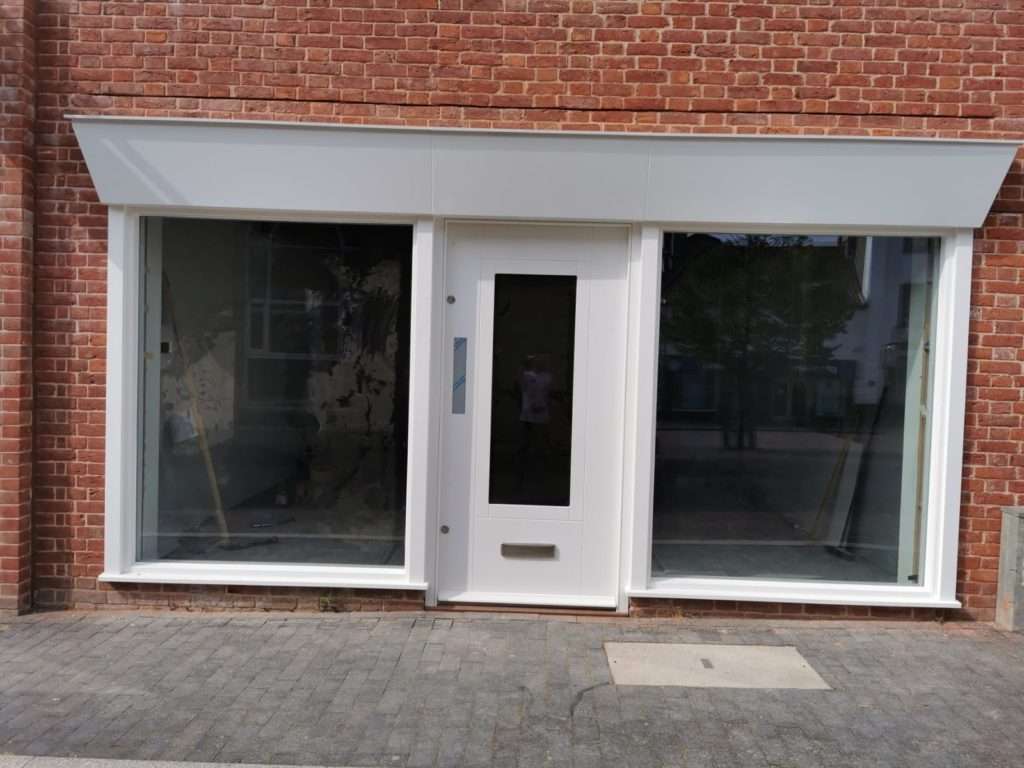The appearance of a shop front plays a crucial role in attracting customers and setting the tone for their shopping experience. A well-designed and professionally installed shop front not only enhances the aesthetic appeal of a business but also serves as a powerful marketing tool. This guide will delve into the various aspects of shop front installation, including planning, materials, design considerations, and the installation process.
Planning Your Shop Front Installation
Before embarking on the shop front installation journey, it is essential to have a clear plan. This involves understanding the specific needs of your business, the target audience, and the message you want to convey through your shop front. Consider the following steps:
- Define Your Objectives: Determine what you aim to achieve with your shop front. Are you looking to create a modern and sleek appearance, or do you want a more traditional and welcoming look? Your objectives will influence every decision in the installation process.
- Research and Inspiration: Take time to research different shop front designs. Visit other stores, browse online portfolios, and gather inspiration. Note down elements that you find appealing and consider how they can be incorporated into your design.
- Budgeting: Establish a realistic budget for your shop front installation. This should include costs for materials, labor, permits, and any additional features such as lighting or signage. Having a budget in place will help guide your choices and prevent overspending.
- Compliance and Permits: Ensure that your shop front installation complies with local regulations and building codes. This may require obtaining permits from the local council or other relevant authorities. Non-compliance can lead to fines and delays, so it’s crucial to address this early in the planning stage.
Materials for Shop Front Installation
The choice of materials significantly impacts the durability, appearance, and maintenance of your shop front. Here are some popular materials to consider:
- Glass: Glass shop fronts are modern, stylish, and offer excellent visibility. They are ideal for businesses that want to showcase their products. However, it is essential to use tempered or laminated glass for safety and durability.
- Aluminum: Aluminum is a versatile and durable material that can be used for frames and panels. It is lightweight, resistant to corrosion, and requires minimal maintenance. Aluminum shop fronts can be powder-coated in various colors to match your branding.
- Wood: For a more traditional or rustic look, wood is an excellent choice. It offers a warm and inviting feel. However, wood requires regular maintenance to protect it from weather damage and ensure longevity.
- Steel: Steel shop fronts provide a robust and industrial appearance. They are highly durable and secure, making them suitable for businesses in areas with higher security concerns. Steel can be painted or coated to prevent rusting.
- Composite Materials: Composite materials combine the best properties of different materials, such as the strength of steel and the aesthetics of wood. They offer flexibility in design and are often used for bespoke shop fronts.
Design Considerations
Designing a shop front involves more than just choosing materials. Several factors must be considered to create an effective and appealing shop front:
- Branding: Your shop front should reflect your brand’s identity. This includes using colors, logos, and design elements that align with your brand. Consistency in branding helps in creating a memorable and recognizable storefront.
- Lighting: Proper lighting enhances the visibility and attractiveness of your shop front, especially at night. Consider using LED lights for energy efficiency and longevity. Highlight key areas such as the entrance, signage, and display windows.
- Signage: Signage is a crucial aspect of a shop front. It should be clear, readable, and positioned prominently. Ensure that the font and colors used in the signage align with your brand.
- Accessibility: Make sure your shop front is accessible to all customers, including those with disabilities. This includes providing ramps, wide doorways, and clear signage.
- Security: Incorporate security features such as reinforced glass, security shutters, and CCTV cameras. A secure shop front protects your business and gives customers peace of mind.
The Installation Process
The installation of a shop front involves several steps, each requiring careful attention to detail. Here is an overview of the process:
- Site Assessment: Before installation begins, a thorough assessment of the site is conducted. This includes measuring dimensions, checking the structural integrity of the building, and identifying any potential challenges.
- Design Finalization: Based on the site assessment and initial design, a final design is created. This includes detailed drawings and specifications for materials and components.
- Preparation: The site is prepared for installation, which may involve removing the existing shop front, cleaning the area, and making any necessary structural modifications.
- Frame Installation: The framework for the shop front is installed first. This provides the structural support for the rest of the installation. The frame must be level and secure.
- Glazing and Paneling: Glass panels and other materials are fitted into the frame. This step requires precision to ensure that all elements align correctly and are securely fastened.
- Finishing Touches: Once the main components are in place, finishing touches such as seals, trims, and any additional features like lighting or signage are added.
- Inspection and Handover: A final inspection is conducted to ensure that the installation meets all quality and safety standards. The shop front is then handed over to the business owner.
Conclusion
A well-executed shop front installation can significantly enhance the appeal and functionality of your business premises. By carefully planning, selecting the right materials, considering key design elements, and following a meticulous installation process, you can create a shop front that not only attracts customers but also stands the test of time. Investing in a professional installation ensures that your shop front makes a positive and lasting impression on every visitor.





